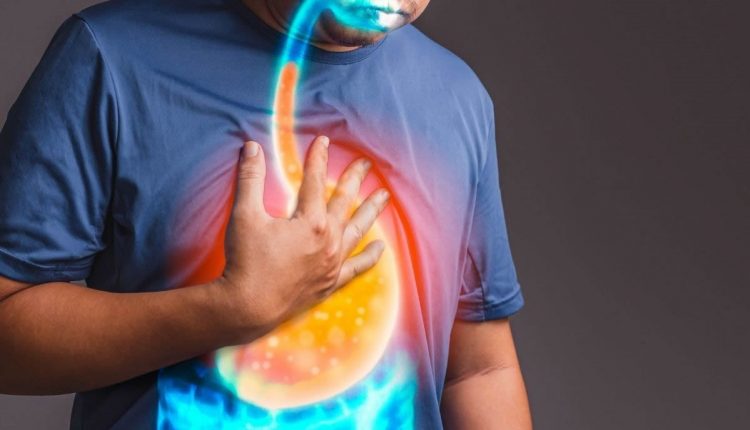
Gastro-oesophageal reflux disease (GERD): symptoms, diagnosis and treatment
Gastro-oesophageal reflux disease (abbreviated as MRGE) is a complex of symptoms caused by the phenomenon of reflux, i.e. the passage of part of the gastric content into the oesophagus resulting in symptoms secondary to irritation of the oesophageal mucosa, with or without macroscopically evident lesions
How widespread is gastro-oesophageal reflux disease (GERD)
Gastro-oesophageal reflux disease (GERD) is one of the most common diseases of the digestive system.
According to data published in the White Paper of Italian Gastroenterology, symptoms of MRGE are present in 44.3% of the population, in all age groups, but particularly after the age of 40, increasing in the last quarter century probably due to the incidence of obesity.
What are the causes of gastro-oesophageal reflux disease?
Gastro-oesophageal reflux disease is caused by several factors: weight and anatomical, dietary, hormonal and pharmacological factors can cause liquid and gas reflux.
Gastro-oesophageal reflux occurs when gastric contents pass into the oesophagus due to relaxation of the lower oesophageal sphincter (intermediate area between the oesophagus and stomach).
The lower oesophageal sphincter, in fact, forms a kind of pressure barrier against reflux.
When its pressure is reduced, gastric acid and non-acidic material flows up from the stomach into the oesophagus.
Normally, under normal conditions, several reflux episodes occur daily: in healthy individuals, an average of 1 to 4 postprandial episodes per hour can occur.
In addition, overweight people and pregnant women are more prone to reflux, which, however, becomes pathological when it is of such duration and frequency as to cause symptoms or injury to the oesophageal mucosa.
Reflux is considered pathological when it is of such duration and frequency as to cause the appearance of symptoms or to cause lesions of the oesophageal mucosa. In this case we speak of gastro-oesophageal reflux disease.
Signs and symptoms of gastro-oesophageal reflux disease
The clinical picture of GERD consists of typical, highly specific symptoms such as regurgitation of gastric contents (typically occurring after large meals or in a supine or forward bending position) and heartburn, i.e. burning behind the stomach and at the ‘mouth of the stomach’.
In some cases it may lead to less typical symptoms in the oesophagus (non-cardiac chest pain), the oro-pharyngeal region (odinophagia, dysphagia and hoarseness), the airways (asthma, chronic cough, pharyngitis) and the oral cavity (glossitis and dental caries).
In more than 50 per cent of cases, gastro-oesophageal reflux disease may be characterised by the presence of inflammatory-erosive lesions in the mucosa of the distal oesophagus.
Diagnosis of gastro-oesophageal reflux disease (GERD)
The diagnosis of GERD is predominantly clinical and is based on the presence of typical symptoms (regurgitation of gastric contents and heartburn).
The diagnosis must be confirmed and deepened through multidisciplinary clinical evaluation and on specific examinations that the specialist doctor may indicate for the study of complications.
According to the AIGO SIED SIGE Federation Guidelines, the diagnostic techniques used in MRGE are:
- T.D. first-line X-ray for the evaluation of the course and calibre of the oesophagus and for the study of the oesophago-gastric junction;
- oesophago-gastro-duodenoscopy (EGDscopy) for evaluation of the oesophageal mucosa;
- 24-hour oesophageal pH-metry and 24-hour multi-channel oesophageal pH-impedancometry for the evaluation of gastro-oesophageal acid reflux
- oesophageal manometry to diagnose any reduction in muscle tone in the lower oesophageal sphincter and to diagnose oesophageal motor changes that may cause MRGE.
Treatment of gastro-oesophageal reflux disease (GERD)
The medical therapy of MRGE is based on the use of drugs that reduce or block gastric secretion: H2 antagonists (such as ranitidine) and proton pump inhibitors (such as omeprazole) often associated with prokinetic drugs used to improve the emptying of the oesophagus and stomach, preventing reflux after meals.
Surgical therapy (traditional, laparoscopic, endoscopic), on the other hand, is considered an extreme solution and is indicated in young subjects with severe disease and in cases with frequent recurrences.
Finally, sleeping elevated, maintaining a good posture, following a balanced diet avoiding potentially refluxogenic foods and substances (coffee, chocolate, mint), maintaining a healthy weight, and avoiding smoking are expedient measures even if indicated in cases of reflux.
Read Also:
Emergency Live Even More…Live: Download The New Free App Of Your Newspaper For IOS And Android
Gastroenterology: Endoscopic Treatment For Gastro-Oesophageal Reflux
Oesophagitis: Symptoms, Diagnosis And Treatment
Asthma, The Disease That Takes Your Breath Away
Gastroesophageal Reflux: Causes, Symptoms, Tests For Diagnosis And Treatment
Global Strategy For Asthma Management And Prevention
Paediatrics: ‘Asthma May Have ‘Protective’ Action Against Covid’
Esophageal Achalasia, The Treatment Is Endoscopic
Oesophageal Achalasia: Symptoms And How To Treat It
Eosinophilic Oesophagitis: What It Is, What The Symptoms Are And How To Treat It
Gastroesophageal Reflux: Causes, Symptoms, Tests For Diagnosis And Treatment
Irritable Bowel Syndrome (IBS): A Benign Condition To Keep Under Control
Long Covid, Study In Neurogastroenterology And Motility: Main Symptoms Are Diarrhoea And Asthenia
Symptoms And Remedies Of A Gastro-Oesophageal Reflux Cough



